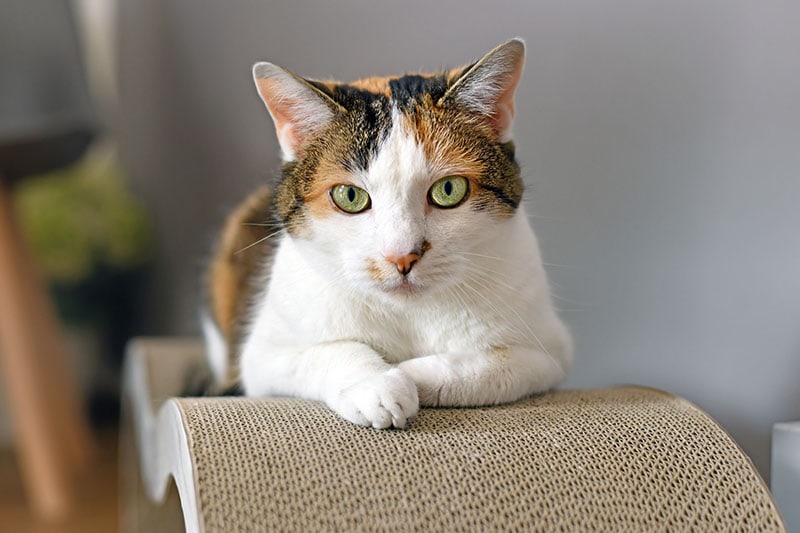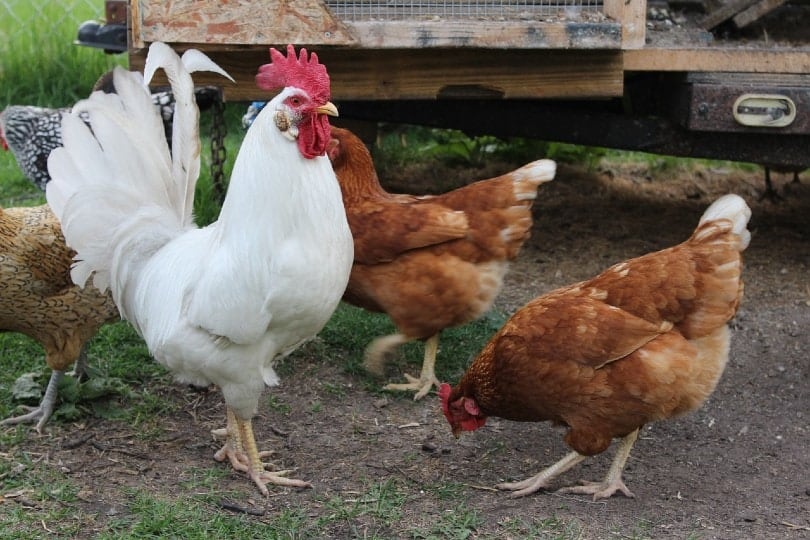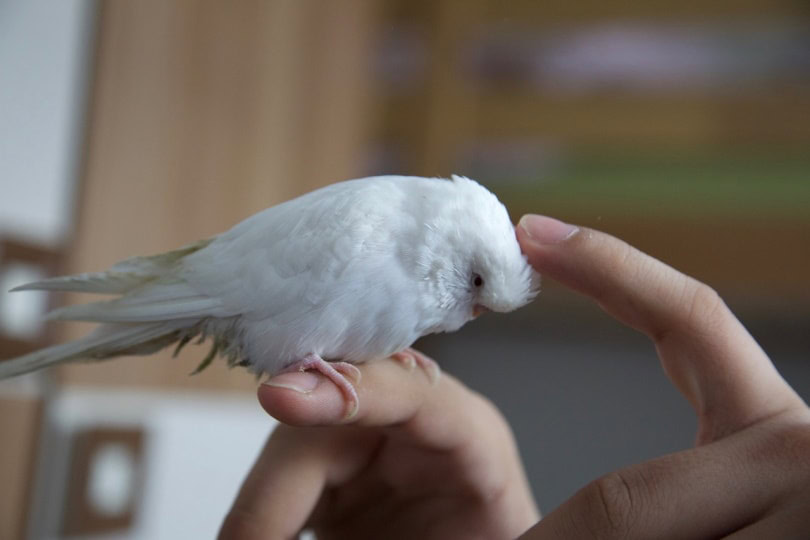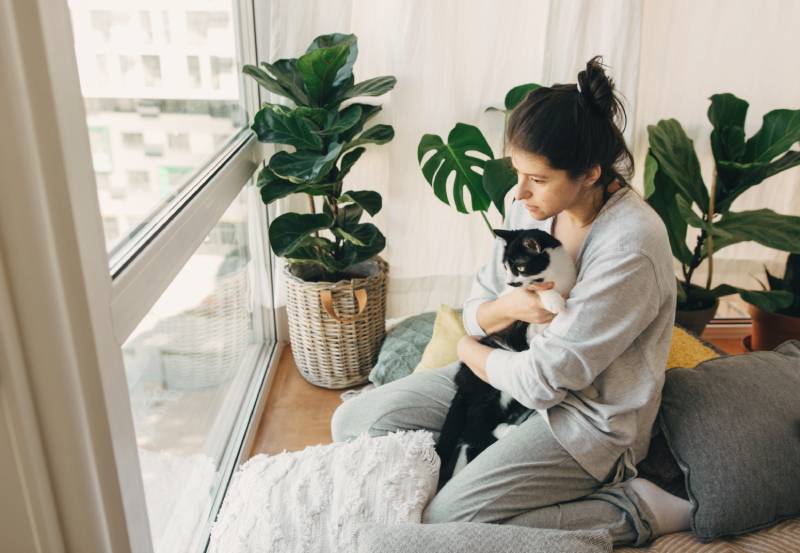VET APPROVED

The information is current and up-to-date in accordance with the latest veterinarian research.
Learn more »Cats have incredible vision, with fascinating adaptations that evolved to meet their needs as crepuscular hunters in the wild. While cats’ color vision is not as rich as ours and they have some trouble seeing close-up objects, they have outstanding night vision and are able to detect the slightest movement.
They can see a whopping six times better than humans in the dark, which makes sense, as cats are crepuscular, meaning most active during dusk and dawn.1 Read on to learn 11 fascinating facts about your cat’s eyes.

The 11 Most Fascinating Facts About Cats’ Eyes
1. Cats Have Amazing Night Vision
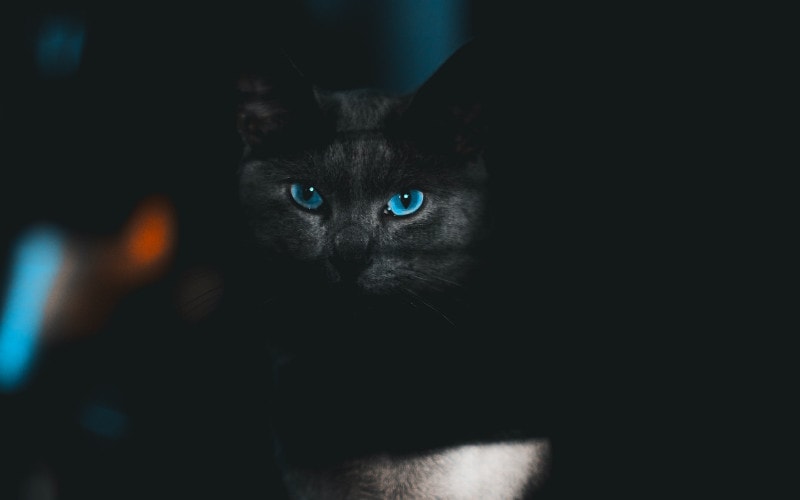
Cats’ pupils dilate further than ours, allowing more light to hit their retinas.
While we struggle to see in low-light conditions, cats have a structure called the tapetum lucidum, which reflects light and gives cats’ eyes the chance to absorb light twice. This, alongside the higher proportion of rod photoreceptors, gives cats exquisite visual acuity under low-light conditions. The only downside is that cat vision may be a bit blurry in bright environments.
2. They Can’t Differentiate Between Green & Red
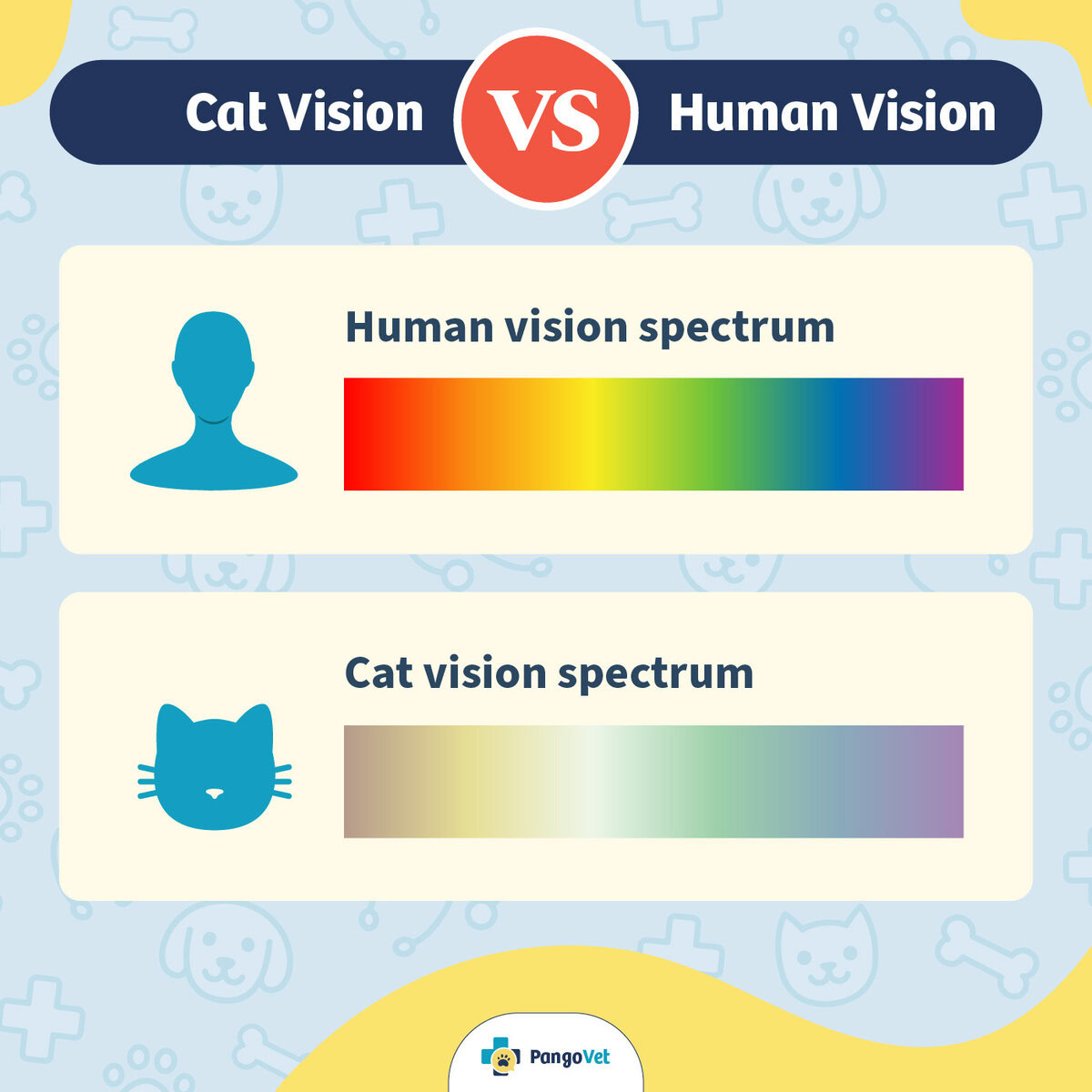
Feline eyes are good at picking up on contrast, but cats’ color vision is poorer than humans’. Cats’ retinas have two types of photoreceptors, rods and cones. The cones are responsible for color vision. Humans have far more cone photoreceptors than cats, giving us richer color vision, the ability to see more colors and wider shade ranges.
3. Cats Can’t See Well Far Away or Close Up
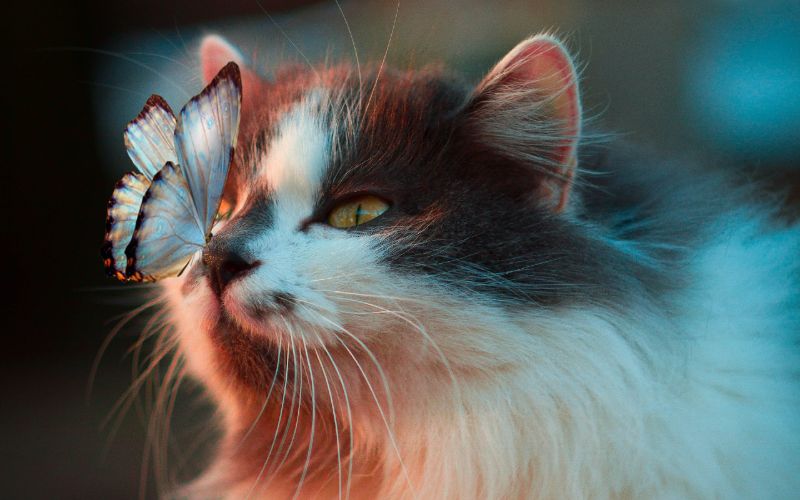
Cats see best at middle distances. They struggle to see in the distance and up close. Feline vision gets hazy at distances over 20 feet; beyond that, cats have trouble making out details. Cats also have difficulty seeing things that are too close, but humans, on the other hand, see best at distances between 100 and 300 feet and have the ability to accommodate their lens to permit close-up vision. Cats’ eyes can’t adjust the shape of their ocular lenses to allow focusing on far away and nearby objects.
4. Cats Have Good Peripheral Vision
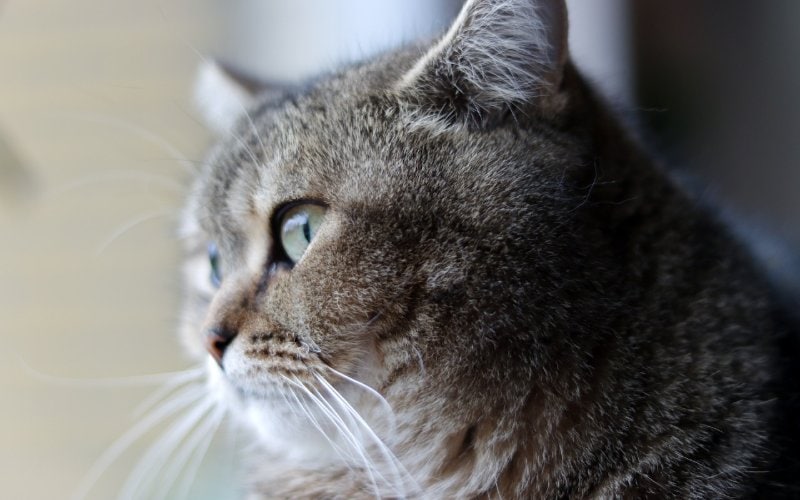
Cats’ eyes sit close to the sides of their heads, giving them outstanding peripheral vision. Humans have front-facing eyes, giving us the advantage of a large binocular visual field. Cats’ eyes are optimized to pick up movement on the periphery of their vision, which gives them a serious leg up as stalking predators. Outstanding peripheral vision allows cats to “find” prey in a wide geographical area.
5. They’re Sensitive to Movement
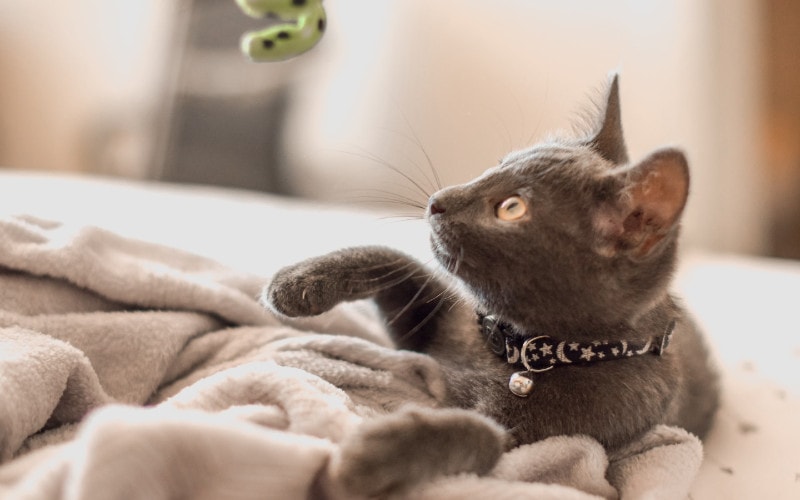
As explained, cats’ retinas have a larger proportion of rods than humans’. Rods are responsible for vision in low-light conditions and for detecting movement. Because cats’ eyes have far more rods than ours, kitties can catch subtle movements, which gives them advantages when hunting prey.
6. Cats Can’t See Well in Bright Light
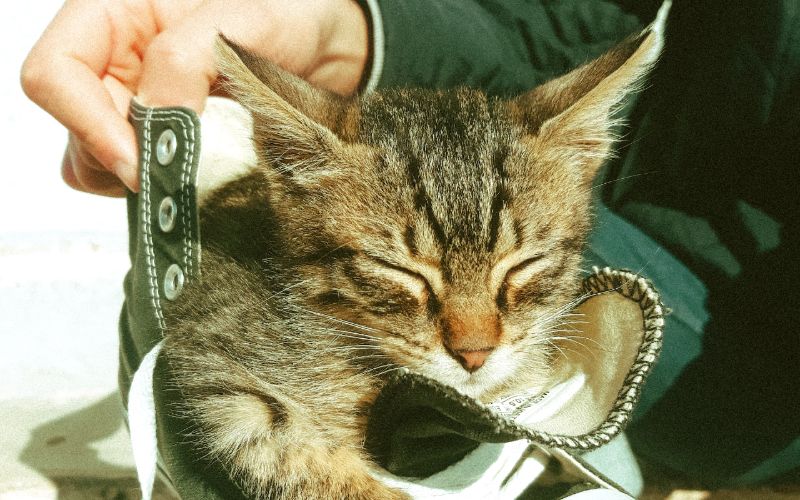
While cats have mind-blowing night vision, they don’t do so well in bright conditions. The tapetum lucidum that cats have behind their retinas reflects light back to the eye, which can interfere with the light that enters the eye directly, especially on bright days. This causes a blurred image, which likely doesn’t affect cat vision very much.
Cats are naturally crepuscular animals that generally prefer being active around dawn and dusk. Most cats spend their afternoons napping and hanging out, activities where daytime vision isn’t really helpful.
7. They Use Their Ears to See Up Close
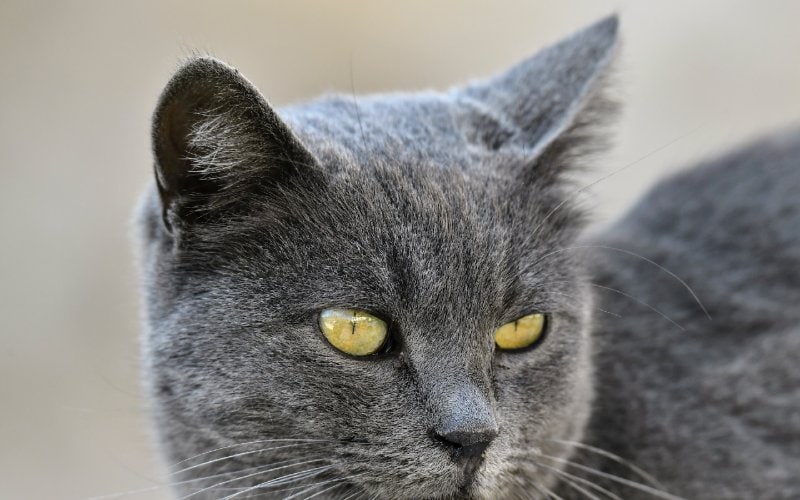
Cats see best at middle distances, with 20 feet being the sweet point. But how do cats catch mice if they can’t see close up? Cats use their hearing and sense of touch to seal the deal when hunting. They can hear sounds in a far larger range than humans and pinpoint where a sound is coming from with exquisite precision from 3 feet away. When cats are near their prey, they often hear their prey’s precise location. Sensitive paw pads and facial whiskers also help cats locate prey by picking up subtle vibrations.
8. They See You Through Smell
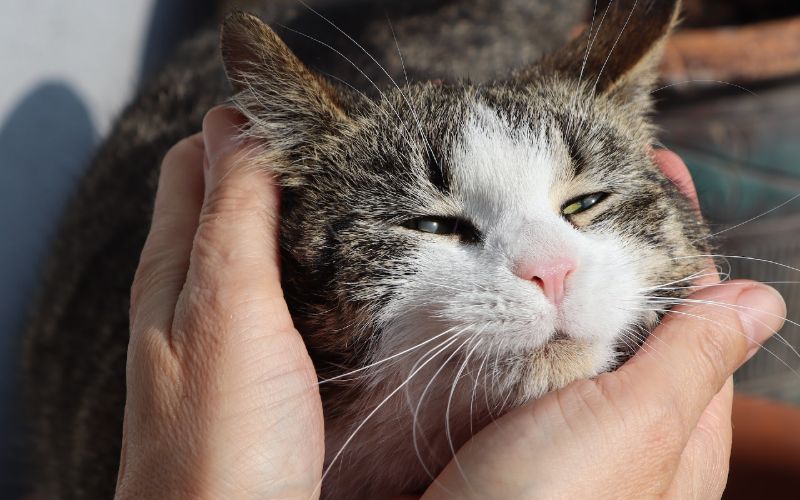
Cats often use their noses to do things we do with our eyes. Feline noses are 14 times more sensitive than humans! Cats use smell to communicate with other felines, and most outdoor cats spray to let other animals know a particular territory has already been claimed. Cats produce pheromones, which are full of information about their health.
They deposit these pheromones on you when they rub against your leg, and you get a dose when petting that adorable spot right behind your buddy’s ears. They pick up some of your scent in exchange. Cats recognize their humans and other family members mostly by this communal scent.
9. Cats Have Three Eyelids
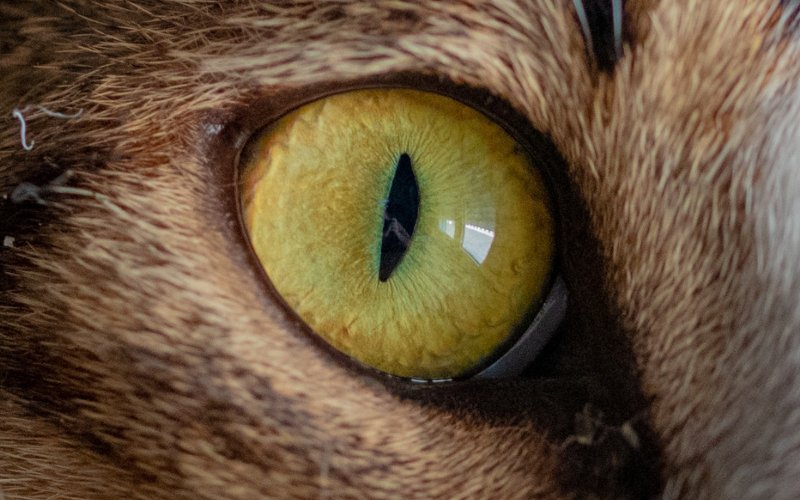
Cats and dogs both have three eyelids. Humans have two! Feline eyes have upper and lower eyelids, much like we do. But cats also have a third eyelid, the nictitating membrane, which is essentially a third interior eyelid. The nictitating membrane rests on the inner corner of the eye. Look for a thin pinkish membrane close to the corner of your pet’s eye.
10. Cats See Better in the Dark Than Dogs
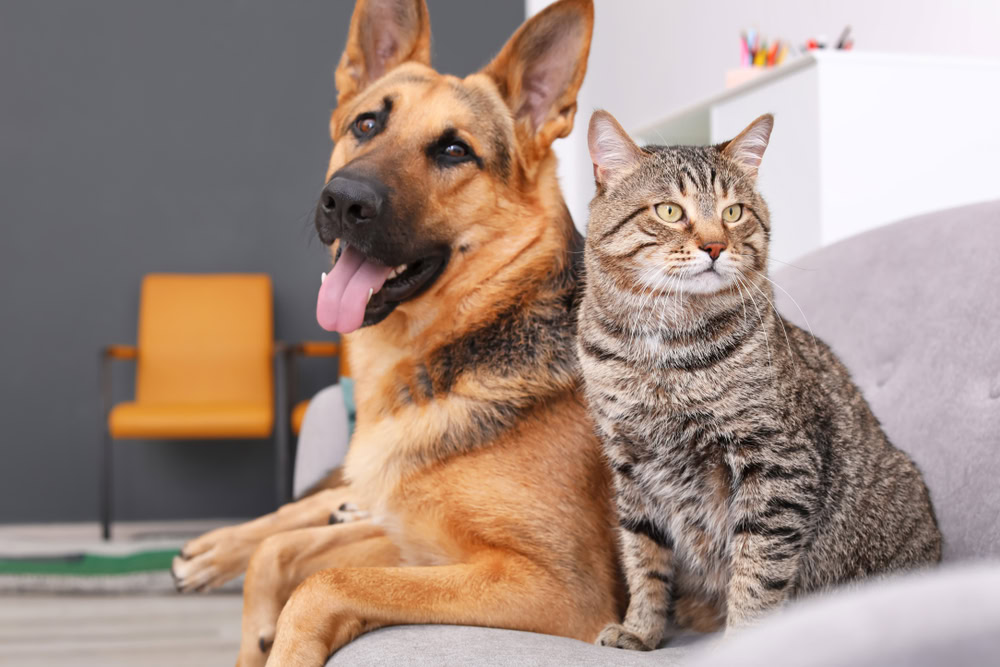
Cats have a remarkable ability to see in low light, thanks in part to their pupils, which can expand dramatically in the dark and contract to narrow slits in bright light. This wide range of motion allows them to control the amount of light entering their eyes with great precision.
In contrast, dogs have round pupils that don’t dilate as widely, limiting the amount of light that reaches their retinas. As a result, cats generally have better night vision than dogs.
11. White Cats With Blue Eyes are Often Deaf
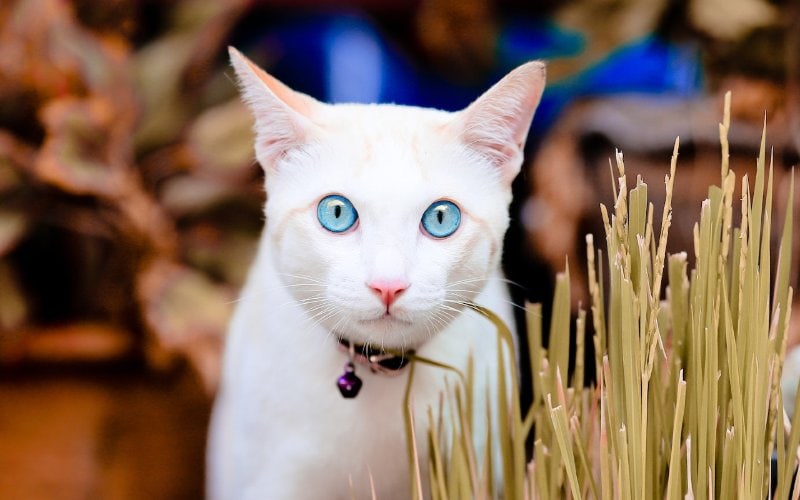
White cats with blue eyes are often born deaf. About 40% of white cats with one blue eye are born deaf. The percentage of white cats with two blue eyes born deaf is even higher, around 65%-85%. Interestingly, some of these cats might be deaf in only one ear, making it almost unnoticeable to their owners.

Summary
Cats’ eyes are perfectly adapted to their needs. As crepuscular predators—most active during dawn and dusk—their vision is optimized for low-light conditions. Cats can see up to six times better than humans at night and are excellent at detecting subtle movements, thanks to eyes designed for tracking fast-moving prey. While feline color vision isn’t as rich as ours, cats are believed to be able to distinguish between blue and green, but not red.
Featured Image Credit: Firn, Shutterstock
Contents
- The 11 Most Fascinating Facts About Cats’ Eyes
- 1. Cats Have Amazing Night Vision
- 2. They Can’t Differentiate Between Green & Red
- 3. Cats Can’t See Well Far Away or Close Up
- 4. Cats Have Good Peripheral Vision
- 5. They’re Sensitive to Movement
- 6. Cats Can’t See Well in Bright Light
- 7. They Use Their Ears to See Up Close
- 8. They See You Through Smell
- 9. Cats Have Three Eyelids
- 10. Cats See Better in the Dark Than Dogs
- 11. White Cats With Blue Eyes are Often Deaf
- Summary
